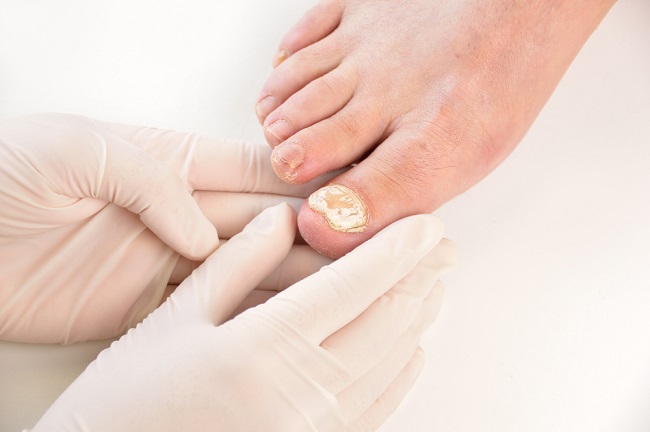Myelodysplastic syndromeis a group of diseases caused by damage to blood cells. This condition occurs when the blood cells produced by the bone marrow are not formed properly.
In the body, the bone marrow is responsible for producing red blood cells, white blood cells, and platelets (platelets). These blood cells function to carry oxygen throughout the body, fight infection, and help the blood clotting process.

In patients with myelodysplastic syndrome, the bone marrow produces abnormal blood cells. These abnormal cells do not develop fully and will die while they are still in the bone marrow or when they enter the bloodstream.
Over time, the number of abnormal blood cells will increase and exceed the number of healthy or "mature" blood cells. This is what then causes the symptoms of myelodysplasia syndrome.
Myelodysplasia syndrome is a type of blood cancer that can occur in anyone. However, this syndrome most often affects adults aged 65 years and over.
TypeMyelodysplastic syndrome
Myelodysplasia syndrome is divided into several types, namely:
- Myelodysplastic syndrome with unilineage dysplasia, in which one type of blood cell (red blood cell, white blood cell, or platelet cell) is low in number and looks abnormal under a microscope
- Myelodysplastic syndrome with multilineage dysplasia, where 2-3 types of blood cells look abnormal
- Myelodysplastic syndrome with ring sideroblasts, where >1 blood cell type is low, with the characteristic red blood cells having an iron ring (ring sideroblasts)
- Myelodysplastic syndrome associated with isolated del chromosome abnormalities, in which red blood cells are few in number, accompanied by mutations in their DNA
- Myelodysplastic syndrome with excess blasts (types 1 and 2), in which one type of blood cell is low and looks abnormal, accompanied by the presence of immature blood cells in the blood and bone marrow
- Myelodysplastic syndrome, unclassifiable, in which one type of "mature" blood cell is low in numbers, with abnormal looking white blood cells and platelets
Causes of Myelodysplastic Syndrome
Myelodysplastic syndrome occurs when the DNA in stem cells (stem cells) in the bone marrow is damaged. As a result, the bone marrow cannot produce healthy blood cells.
It is not known what causes the condition, but there are a number of factors that are known to increase a person's risk of developing myelodysplastic syndrome, namely:
- Over 65 years old
- Have you ever had chemotherapy or radiotherapy?
- Exposure to chemicals, such as cigarette smoke, pesticides, and benzene
- Exposure to heavy metals, such as lead and mercury
Symptoms of Myelodysplasia Syndrome
In its early stages, myelodysplastic syndrome rarely shows signs or symptoms. However, as the disease progresses, sufferers may experience symptoms such as:
- Hard to breathe
- Body tired easily
- Pale, due to lack of red blood cells or anemia
- Recurrent infections, due to a lack of white blood cells
- Easy bruising or bleeding, due to low platelet count
- Red spots appear under the skin due to bleeding
When to go to the doctor
Check with your doctor if you experience the above symptoms, especially if you have factors that can increase your risk of developing myelodysplastic syndrome. If treated quickly, you can avoid serious complications from this disease.
Myelodysplastic Syndrome Diagnosis
To establish a diagnosis, the doctor will ask about the patient's symptoms and medical history, followed by a physical examination. Then, to make the diagnosis more accurate, the doctor may also perform the following examinations:
- Complete blood test
Complete blood tests are performed to determine the number of red blood cells, white blood cells, and platelets. Blood tests also aim to determine whether there are changes in the size, shape, and shape of the blood cells.
- Bone marrow aspiration
Aspiration of bone marrow fluid samples (bone marrow aspiration) followed by bone marrow tissue sampling (biopsy) aims to determine the overall condition of the blood cells.
- Genetic testing
Genetic testing is done using bone marrow tissue samples. This examination aims to see the possibility of genetic changes or abnormalities, including the chromosomes.
Myelodysplastic Syndrome Treatment
Treatment of myelodysplastic syndrome aims to inhibit disease progression, relieve symptoms, and prevent bleeding and infection. Some of the treatments that doctors can do are:
Blood transfusion
Blood transfusion aims to replace damaged blood cells with healthy blood cells. Blood transfusions can be accompanied by chelation therapy to reduce iron levels in the blood, resulting from too frequent blood transfusions.
Drugs
The drugs given can aim to increase the production of blood cells, treat infections, suppress the immune system, or stimulate the maturation of blood cells. These drugs include:
- Epoetin alpha
- Darbepoetin alfa
- Filgrastim
- Lenalidomide
- Antibiotics
- Decitabine
Bone marrow transplant
A bone marrow transplant or stem cell transplant aims to replace the patient's bone marrow with healthy bone marrow from a donor. This therapy is preceded by the administration of high doses of chemotherapy drugs, to destroy the damaged stem cells.
Complications of myelodysplastic syndrome
Complications that may result from myelodysplastic syndrome include:
- Anemia due to lack of red blood cells
- Acute myeloblastic leukemia
- Bleeding that is difficult to stop due to low platelets (thrombocytopenia)
- Frequent infections due to low white blood cell count
Myelodysplastic Syndrome Prevention
It is not known exactly how to prevent myelodysplastic syndrome. However, you can reduce your risk of developing myelodysplastic syndrome by quitting smoking and avoiding exposure to other chemicals that can increase your risk of developing this condition.
If you have myelodysplastic syndrome, you can develop frequent infections due to a low number of healthy white blood cells. To prevent this, you can do the following:
- Wash hands with soap and water or hand sanitizer before preparing food and before eating
- Avoid consuming raw foods, including unpeeled fruits and vegetables
- Avoid direct contact with people who are sick









